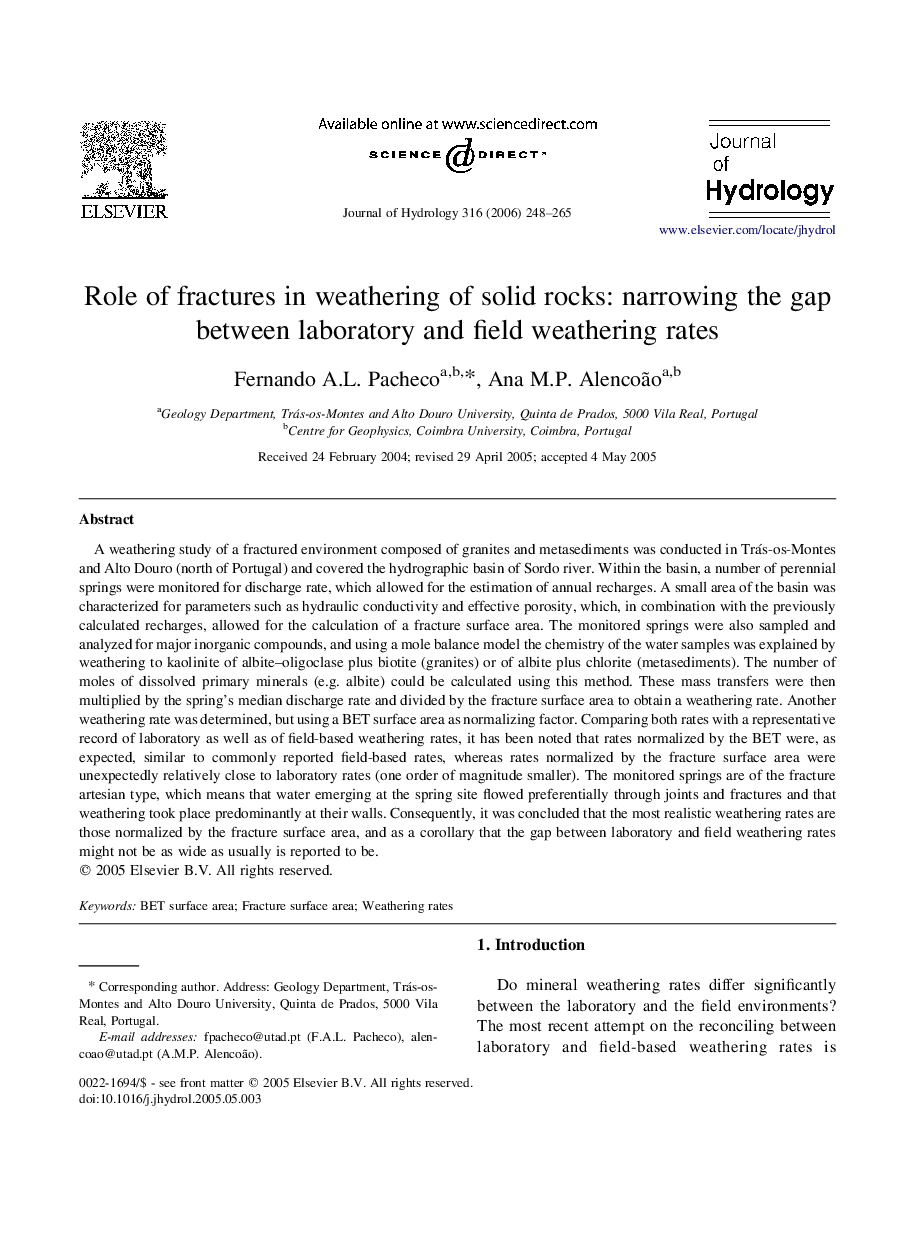| کد مقاله | کد نشریه | سال انتشار | مقاله انگلیسی | نسخه تمام متن |
|---|---|---|---|---|
| 4580907 | 1630174 | 2006 | 18 صفحه PDF | دانلود رایگان |
عنوان انگلیسی مقاله ISI
Role of fractures in weathering of solid rocks: narrowing the gap between laboratory and field weathering rates
دانلود مقاله + سفارش ترجمه
دانلود مقاله ISI انگلیسی
رایگان برای ایرانیان
موضوعات مرتبط
مهندسی و علوم پایه
علوم زمین و سیارات
فرآیندهای سطح زمین
پیش نمایش صفحه اول مقاله

چکیده انگلیسی
A weathering study of a fractured environment composed of granites and metasediments was conducted in Trás-os-Montes and Alto Douro (north of Portugal) and covered the hydrographic basin of Sordo river. Within the basin, a number of perennial springs were monitored for discharge rate, which allowed for the estimation of annual recharges. A small area of the basin was characterized for parameters such as hydraulic conductivity and effective porosity, which, in combination with the previously calculated recharges, allowed for the calculation of a fracture surface area. The monitored springs were also sampled and analyzed for major inorganic compounds, and using a mole balance model the chemistry of the water samples was explained by weathering to kaolinite of albite-oligoclase plus biotite (granites) or of albite plus chlorite (metasediments). The number of moles of dissolved primary minerals (e.g. albite) could be calculated using this method. These mass transfers were then multiplied by the spring's median discharge rate and divided by the fracture surface area to obtain a weathering rate. Another weathering rate was determined, but using a BET surface area as normalizing factor. Comparing both rates with a representative record of laboratory as well as of field-based weathering rates, it has been noted that rates normalized by the BET were, as expected, similar to commonly reported field-based rates, whereas rates normalized by the fracture surface area were unexpectedly relatively close to laboratory rates (one order of magnitude smaller). The monitored springs are of the fracture artesian type, which means that water emerging at the spring site flowed preferentially through joints and fractures and that weathering took place predominantly at their walls. Consequently, it was concluded that the most realistic weathering rates are those normalized by the fracture surface area, and as a corollary that the gap between laboratory and field weathering rates might not be as wide as usually is reported to be.
ناشر
Database: Elsevier - ScienceDirect (ساینس دایرکت)
Journal: Journal of Hydrology - Volume 316, Issues 1â4, 10 January 2006, Pages 248-265
Journal: Journal of Hydrology - Volume 316, Issues 1â4, 10 January 2006, Pages 248-265
نویسندگان
Fernando A.L. Pacheco, Ana M.P. Alencoão,